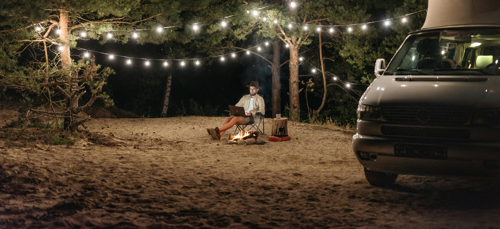Storytelling is Far More Effective than Glossy Employer Branding
ERE.net have published a report by entrepreneur Alon Laniado on employer branding which really resonates with my experience as a head-hunter. Here are some tips to improve your story brand

ERE.net is a favourite industry site for top end recruiters. They’ve just published a report by entrepreneur Alon Laniado on employer branding which really resonated with my experience as a head-hunter.
Poaching is not easy and one might say it’s more of a challenge if the client does not have a careers site or publicly stated narrative on why their organisation is a great place to work. Harder still when one of the few narratives out there are the negative commentaries on Glass Door.
Well, I’d say that isn’t a problem. In fact, it gives me the opportunity to find and tell stories that resonate with the specific people I’m targeting.
Laniado commissioned a study using physiological monitoring which examined candidates’ immersion levels during a standard recruitment process. Immersion is measured second by second and is a combination of attention and emotional resonance. It’s the leading indicator of positive outcomes from an experience. It is a strong indicator of whether the content presented is persuasive and will lead them to take action; in this context, to apply for a job and accept an offer.
Using 68 participants’ physiological data, such as heart rate and oxytocin levels, they found that employee stories are 20 percent more immersive than recruiting through career sites alone.
They also found:
- Employee stories drove constant immersion during the 30-minute session, compared to the careers site where interest dropped by over 30 percent after an initial peak
- Employee stories are 50 percent ‘less frustrating’ than careers sites and significantly below industry benchmarks for frustration
- Real-time engagement with employees is the most immersive approach, often via live chat in this context, with 95 percent of participants saying the content was highly relevant or relevant
Why storytelling is more effective than glossy employer branding
The above findings do not surprise me. Generalised, innocuous branding lacks authenticity and doesn’t put off the wrong people. Well picked employee experience stories can reflect the personas of the people you would like to bring on board and even tap into their self-identity and their emotional objectives.
Examples from my experience include:
- Ensuring my female technology candidates, who are keen to become directors, are made aware of the women in my client’s firm who have reached those goals. There’s no need to make it a female thing though; indeed, that might put some women off.
- Making strong, ambitious types who have struggled with corporate politics aware of stories about people who initially might not have fitted in, such as expats not speaking a local tongue, eventually reaching C-level.
- Telling strong product engineers about the top-notch marketers in a business unit (sharing profiles even), spelling out how there is a gap in this great team (a requirement for a more engineering mind-set) and how they could fill it. Storytelling isn’t just about “me too”.
What that could mean for your company
For my clients, I’ve found the storytelling approach has led to:
- Uncovering pro-diversity success stories that we have been able to leverage without even muttering ‘diversity’, ‘female’ or ‘representation’
- Inspiring strong, but sceptical, candidates who lacked confidence because of past difficulties
- Helping separate our clients’ pitches from those that are similar. Who would you go for when faced with two employers with similar propositions? Authenticity and real-life stories make a winning difference even if there really was no difference to begin with.
Rather than telling candidates who you are, you’re showing them — and they’ll be more likely to listen.
About the author
Having started his career in Executive Search in 1998, Doug set up Collingwood in 2005 alongside his wife, Claire Mackay.
Read more >



